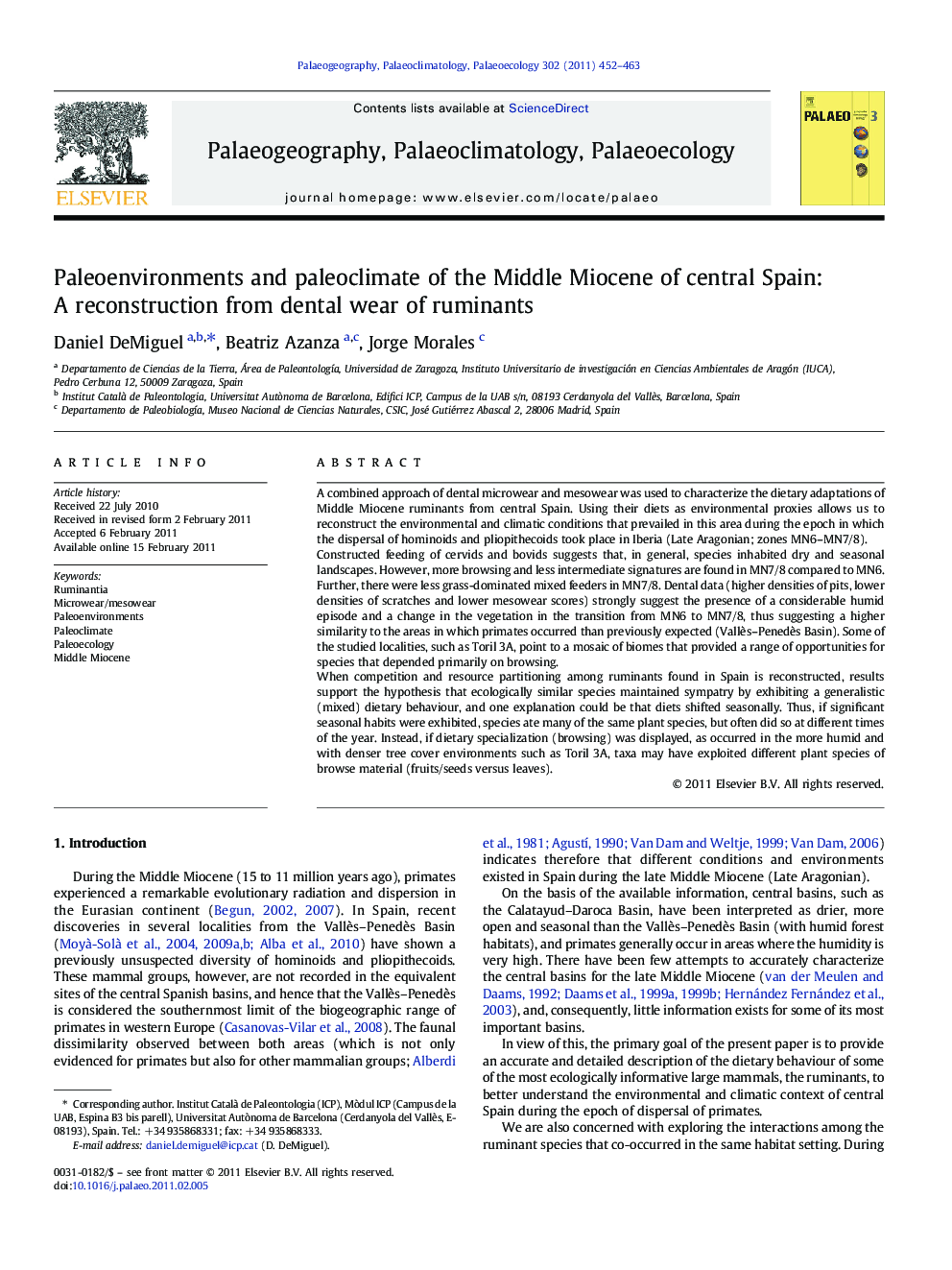| کد مقاله | کد نشریه | سال انتشار | مقاله انگلیسی | نسخه تمام متن |
|---|---|---|---|---|
| 4467208 | 1622260 | 2011 | 12 صفحه PDF | دانلود رایگان |

A combined approach of dental microwear and mesowear was used to characterize the dietary adaptations of Middle Miocene ruminants from central Spain. Using their diets as environmental proxies allows us to reconstruct the environmental and climatic conditions that prevailed in this area during the epoch in which the dispersal of hominoids and pliopithecoids took place in Iberia (Late Aragonian; zones MN6–MN7/8).Constructed feeding of cervids and bovids suggests that, in general, species inhabited dry and seasonal landscapes. However, more browsing and less intermediate signatures are found in MN7/8 compared to MN6. Further, there were less grass-dominated mixed feeders in MN7/8. Dental data (higher densities of pits, lower densities of scratches and lower mesowear scores) strongly suggest the presence of a considerable humid episode and a change in the vegetation in the transition from MN6 to MN7/8, thus suggesting a higher similarity to the areas in which primates occurred than previously expected (Vallès–Penedès Basin). Some of the studied localities, such as Toril 3A, point to a mosaic of biomes that provided a range of opportunities for species that depended primarily on browsing.When competition and resource partitioning among ruminants found in Spain is reconstructed, results support the hypothesis that ecologically similar species maintained sympatry by exhibiting a generalistic (mixed) dietary behaviour, and one explanation could be that diets shifted seasonally. Thus, if significant seasonal habits were exhibited, species ate many of the same plant species, but often did so at different times of the year. Instead, if dietary specialization (browsing) was displayed, as occurred in the more humid and with denser tree cover environments such as Toril 3A, taxa may have exploited different plant species of browse material (fruits/seeds versus leaves).
Research Highlights
► We characterize diets during the epoch of dispersion of primates in central Spain.
► We examine changes in the evolution of dental (micro- and meso-) wear of ruminants.
► Species inhabited generally dry-seasonal landscapes, and more closed areas in MN7/8.
► Opportunist species maintained sympatry by space/time partitioning of vegetation.
► Browsers coexisted through different specializations (fruits/seeds vs. leaves).
Journal: Palaeogeography, Palaeoclimatology, Palaeoecology - Volume 302, Issues 3–4, 15 March 2011, Pages 452–463